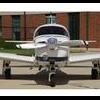Ray Jay Turbo Question
-
Members Online
- jcolgan
- Fly Boomer
- pkellercfii
- Twing207
- GeeBee
- exM20K
- MikeOH
- M20F
- StevenL757
- Parker_Woodruff
- Lincoln
- EricJ
- drstephensugiono
- Crawfish
- jjvanl
- Aaviationist
- eman1200
- 201er
- Lax291
- theanswriz42
- Brian2034
- Mark89114
- Mooney in Oz
- N201MKTurbo
- Robm
- rahill
- Hank
- Skyland
- Jeff Uphoff
- DXB
- DonMuncy
- PT20J
- Scott Duckworth
- TCC
- redbaron1982
- gevertex


Recommended Posts
Join the conversation
You can post now and register later. If you have an account, sign in now to post with your account.